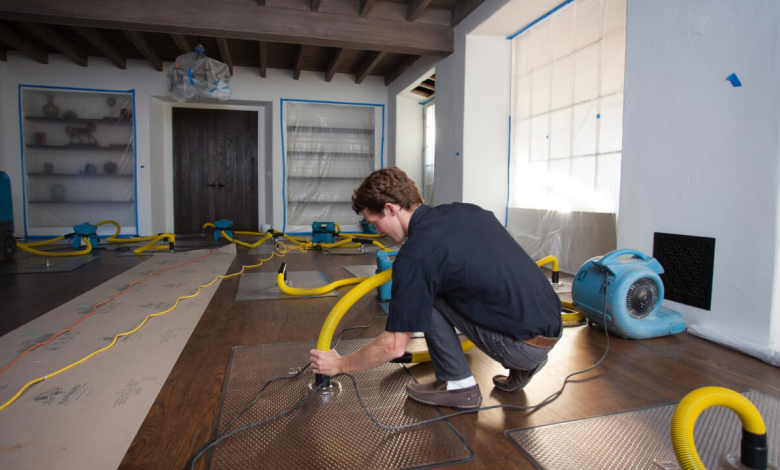Rapid Response: Understanding the Process of Emergency Water Damage Restoration

Water damage emergencies can strike unexpectedly, wreaking havoc on homes and businesses alike. Whether caused by flooding, burst pipes, or sewage backups, swift action is crucial to minimize the damage and restore affected properties to their pre-loss condition. This article delves into the essential steps and processes involved in emergency water damage restoration, highlighting the importance of professional intervention and proactive measures.
1. Assessment and Inspection
Upon arrival at the scene of water damage, restoration professionals conduct a thorough assessment and inspection. This initial step is critical in determining the extent of the damage and formulating an appropriate restoration plan. Technicians identify the source of water intrusion, assess the affected areas, and categorize the water damage based on its source (clean water, gray water, or black water).
2. Water Extraction
The next step involves the swift removal of standing water from the premises. Powerful pumps and extraction equipment are employed to extract water efficiently. This process not only removes visible water but also targets moisture trapped in carpets, furniture, and building materials. Effective water extraction helps prevent mold growth and structural damage, facilitating faster drying times.
3. Drying and Dehumidification
After water extraction, the drying and dehumidification phase begins. Industrial-grade air movers and dehumidifiers are strategically placed to accelerate evaporation and reduce humidity levels. Technicians monitor moisture levels regularly to ensure thorough drying of all affected surfaces and materials. Proper drying techniques are crucial to prevent secondary damage such as mold growth and structural instability.
4. Cleaning and Sanitization
Once the area is thoroughly dried, restoration professionals proceed with cleaning and sanitization. This step involves cleaning surfaces, furniture, and belongings affected by water damage. Specialized cleaning agents and techniques are used to remove contaminants and prevent microbial growth. Sanitization helps restore the indoor environment to a safe and hygienic condition, ensuring the health and well-being of occupants.
5. Restoration and Repairs
The final phase of emergency water damage restoration focuses on restoring the property to its pre-loss condition. Depending on the severity of the damage, this may involve repairs such as replacing drywall, repairing flooring, or rebuilding structural components. Restoration professionals work closely with homeowners or business owners to complete necessary repairs efficiently and effectively.
Importance of Professional Expertise
Emergency water damage restoration requires specialized knowledge, equipment, and techniques that only trained professionals can provide. Attempting DIY cleanup or relying on inadequate equipment can exacerbate damage and increase restoration costs in the long run. Professional restoration companies have the expertise to handle various types of water damage scenarios, ensuring thorough restoration and minimizing disruption to daily life or business operations.
Preventive Measures
While immediate action is crucial during a emergency, proactive measures can help prevent such incidents in the first place. Regular maintenance of plumbing systems, timely repairs of leaks, and installation of proper drainage systems can significantly reduce the risk of water damage. Additionally, ensuring adequate insurance coverage for water-related incidents can provide peace of mind and financial protection in case of emergencies.
Conclusion
Emergency water restoration is a multifaceted process that demands swift action, expertise, and attention to detail. By understanding the steps involved—from assessment and extraction to drying, cleaning, and restoration—homeowners and business owners can better prepare for and respond to water emergencies. Professional restoration services play a crucial role in mitigating damage, restoring properties, and safeguarding the health and safety of occupants. Investing in prompt, professional assistance is key to minimizing the impact of water damage and restoring peace of mind.
In conclusion, proactive preparation and swift response are essential in handling emergency water damage situations effectively. By entrusting the restoration process to qualified professionals, property owners can navigate the challenges of water with confidence, knowing that their homes or businesses are in capable hands.




